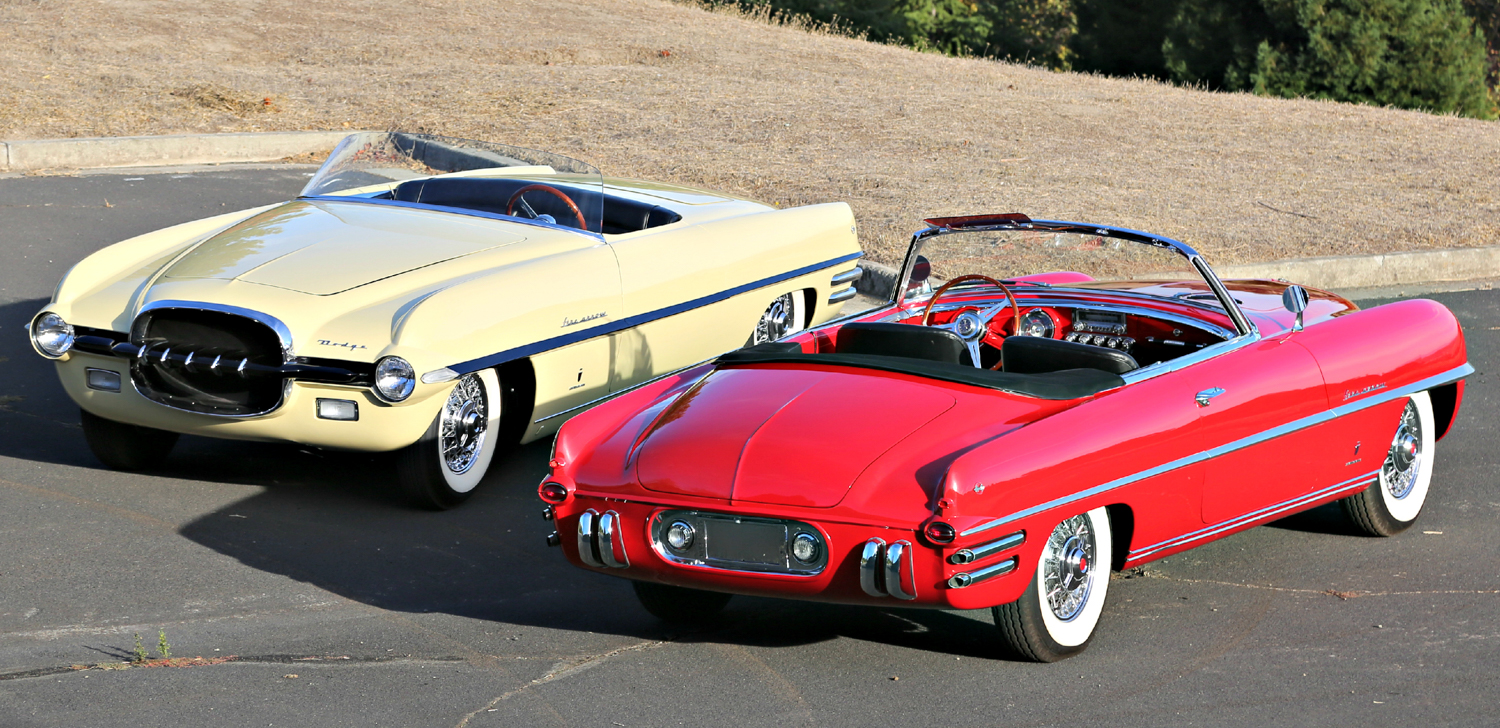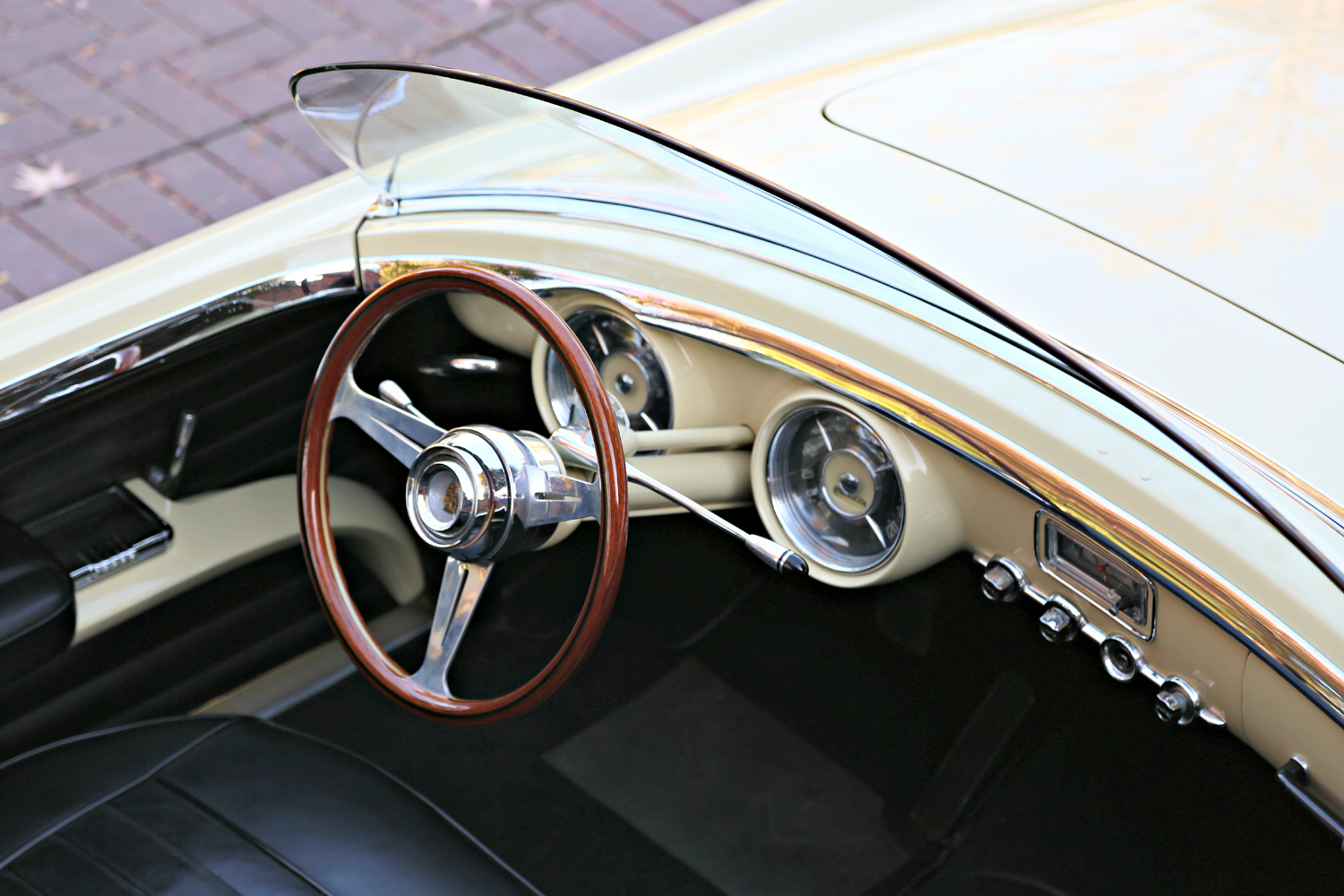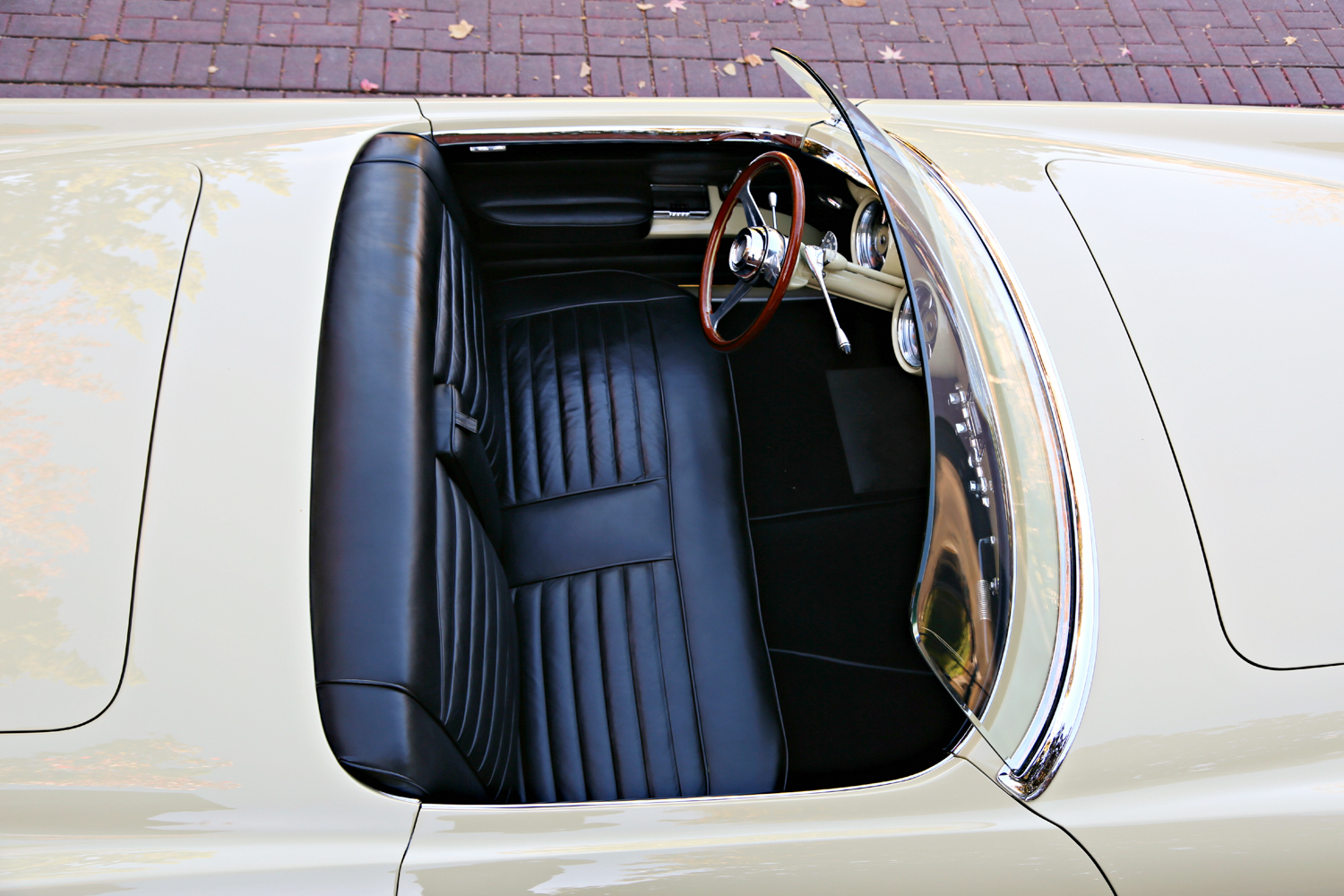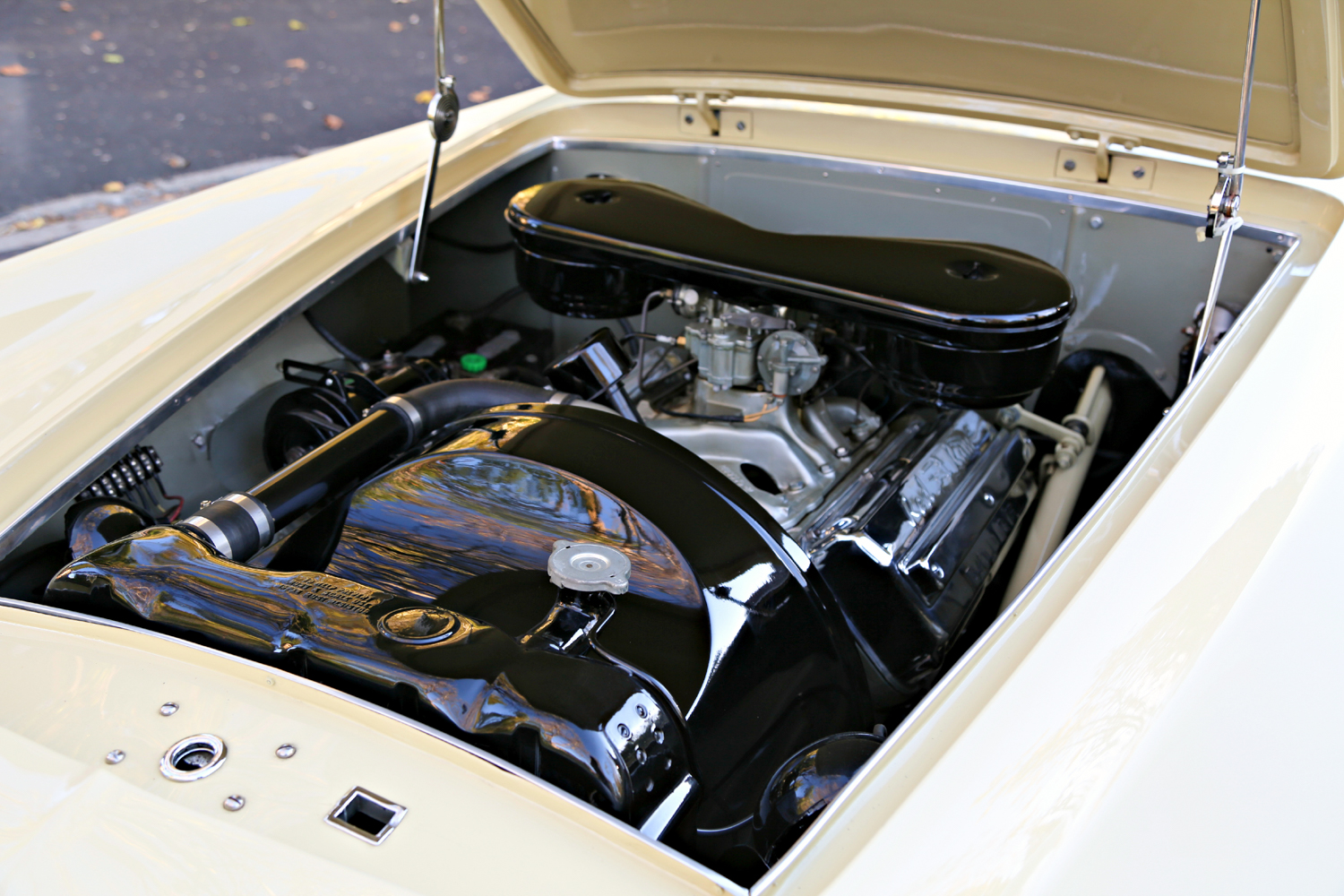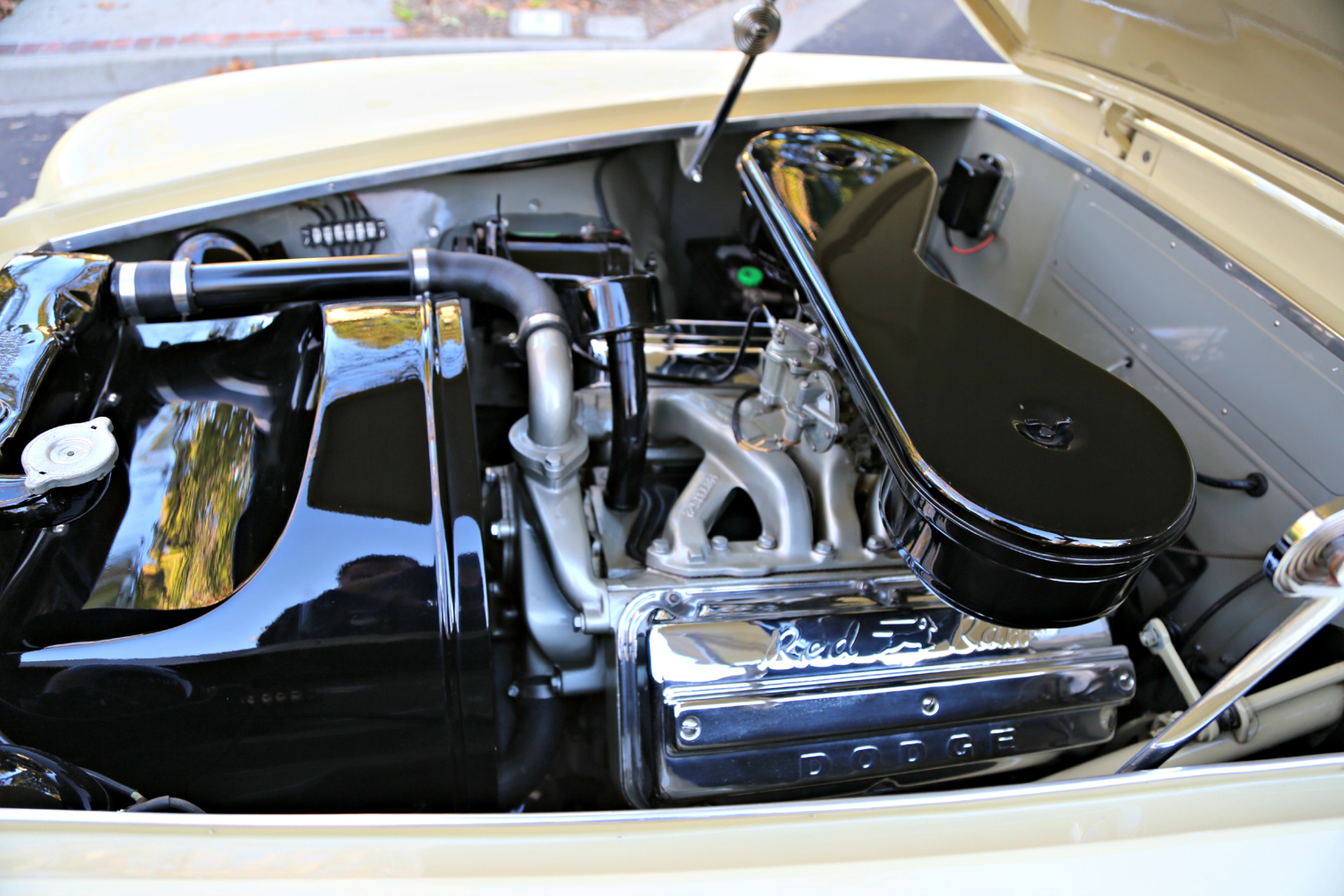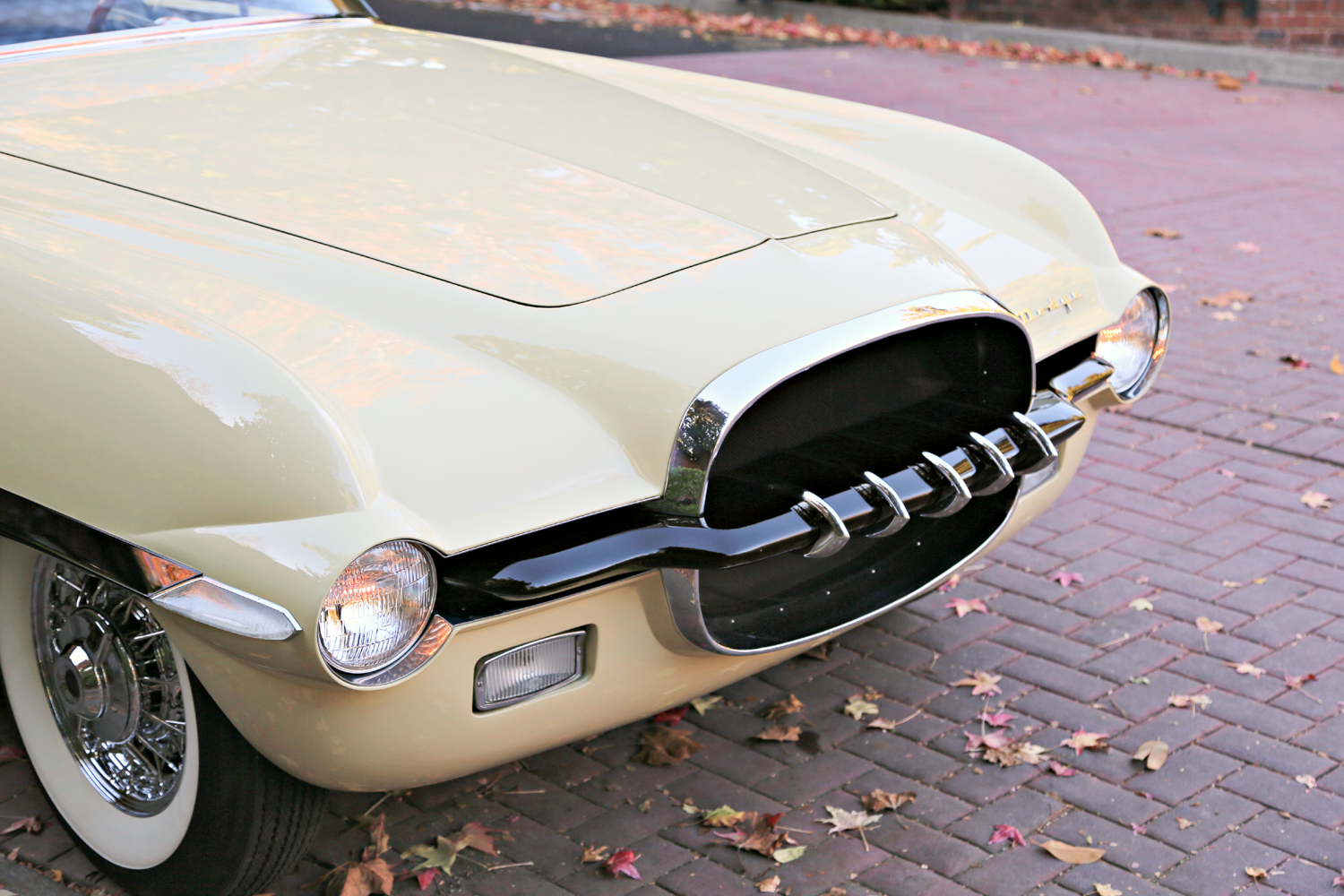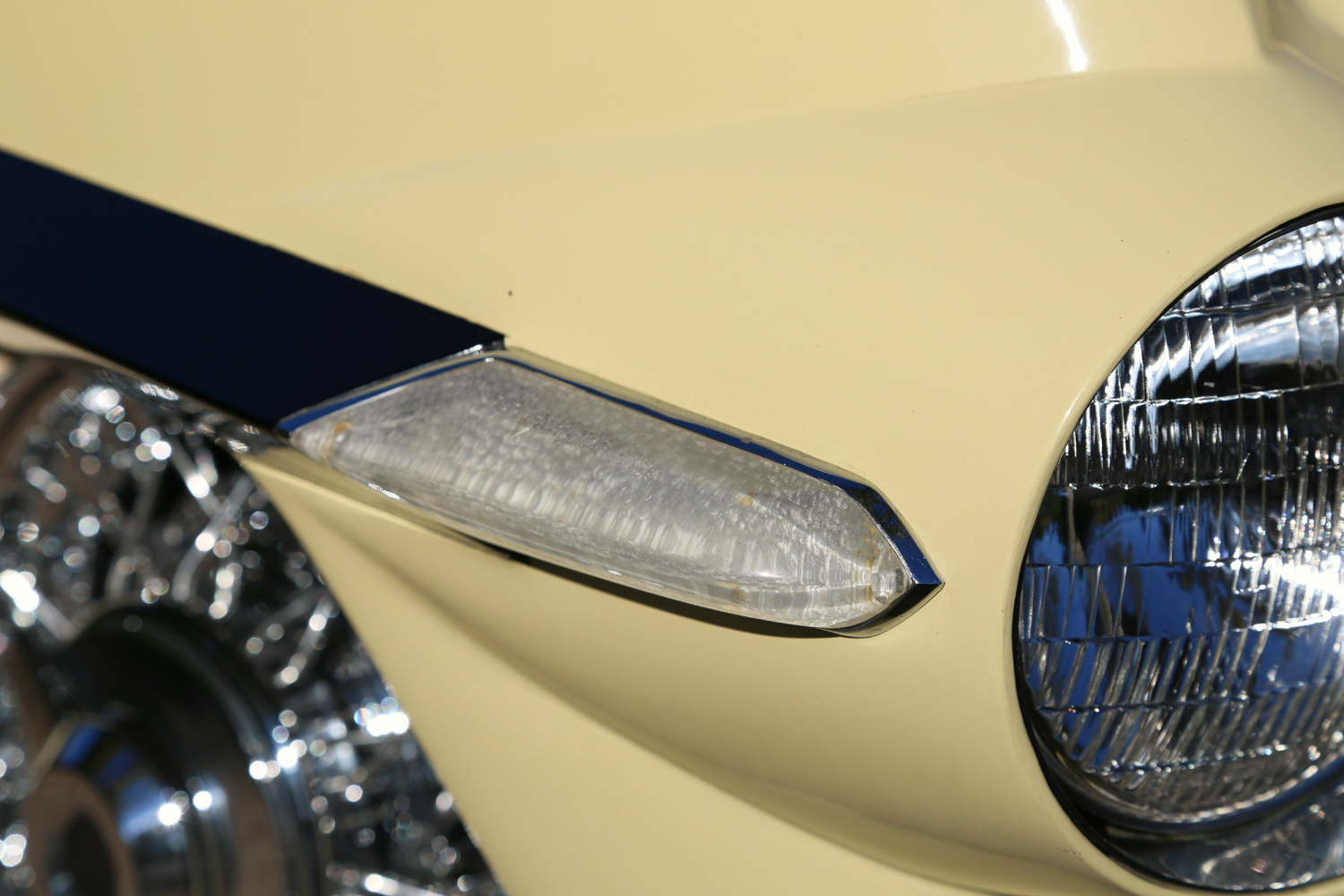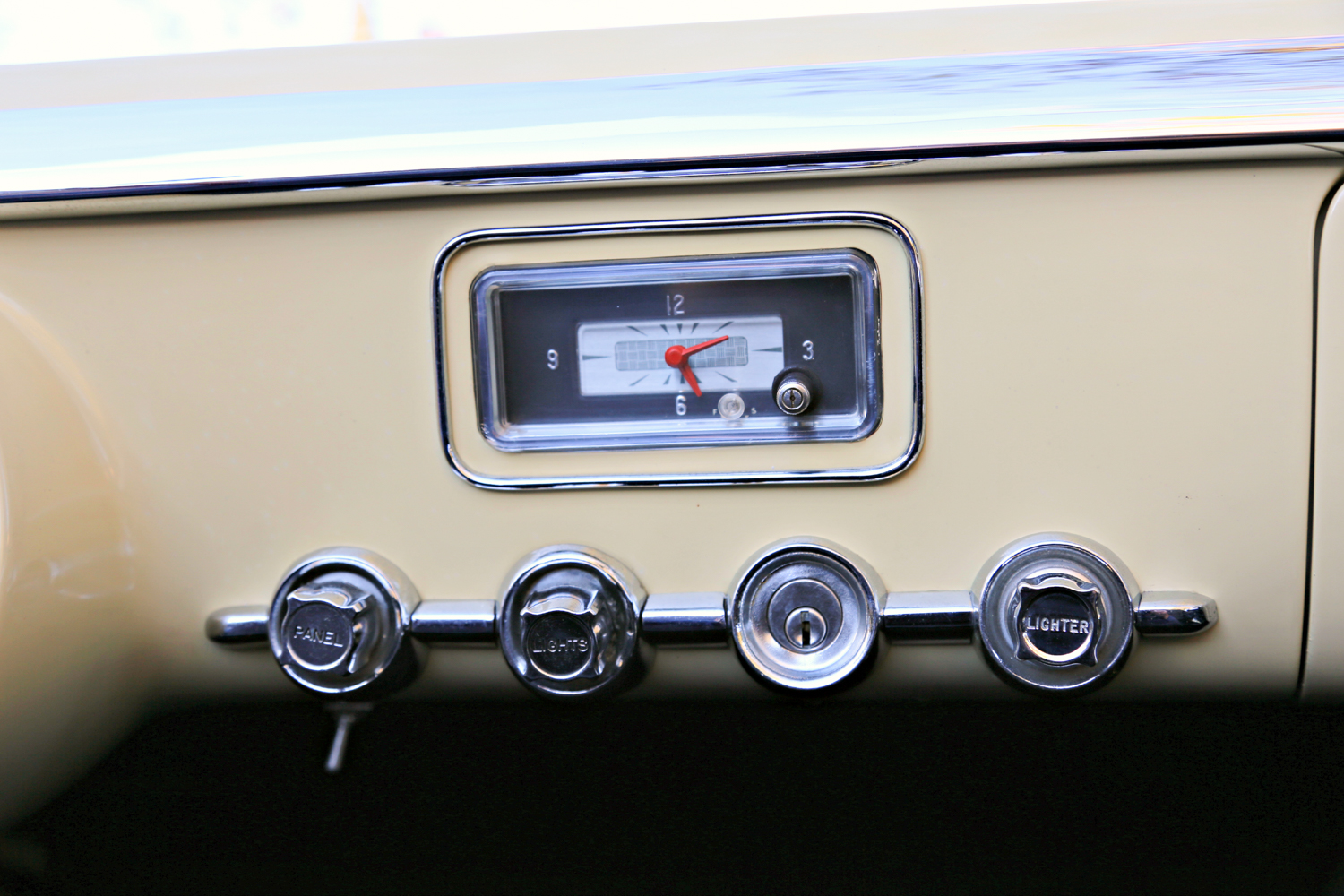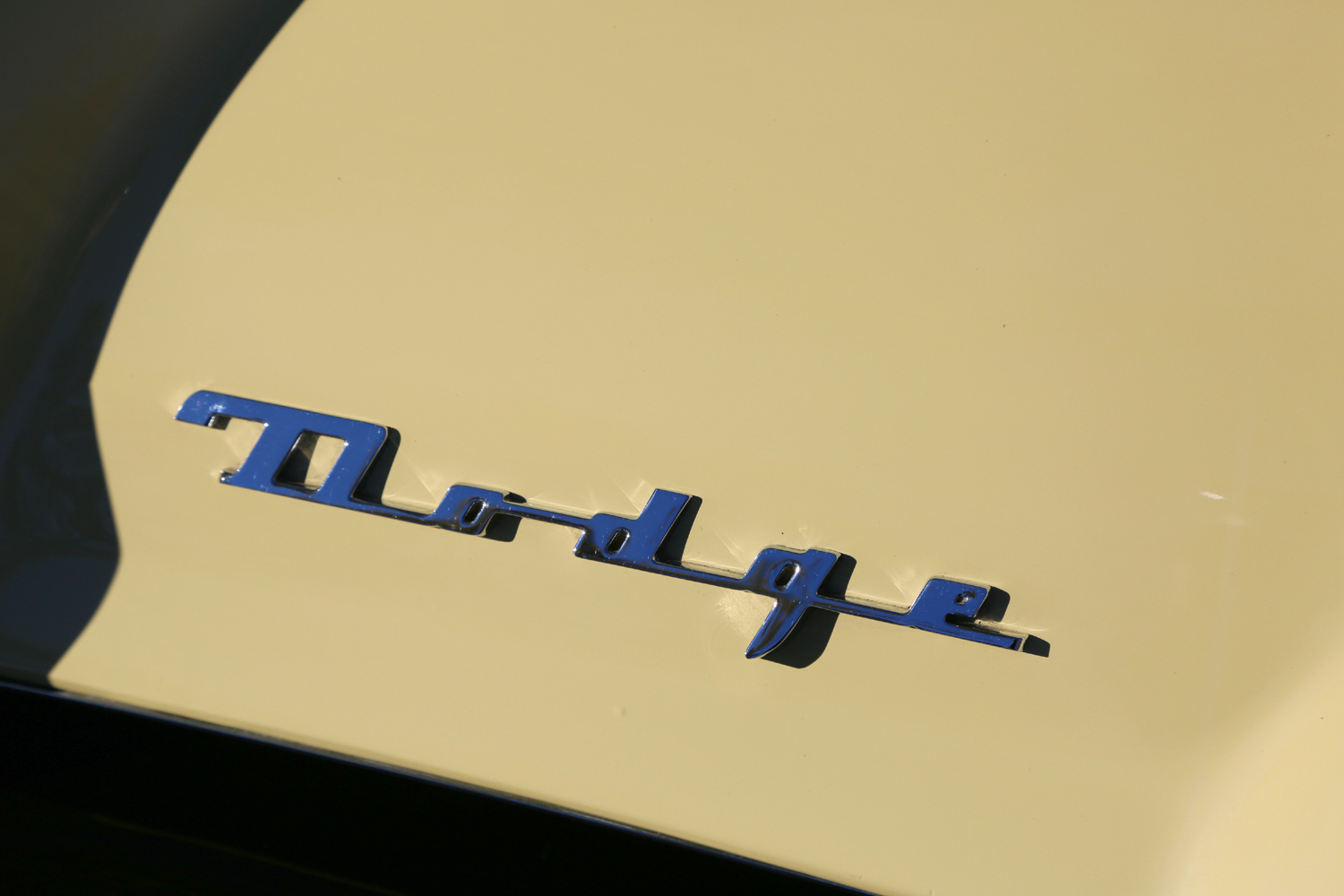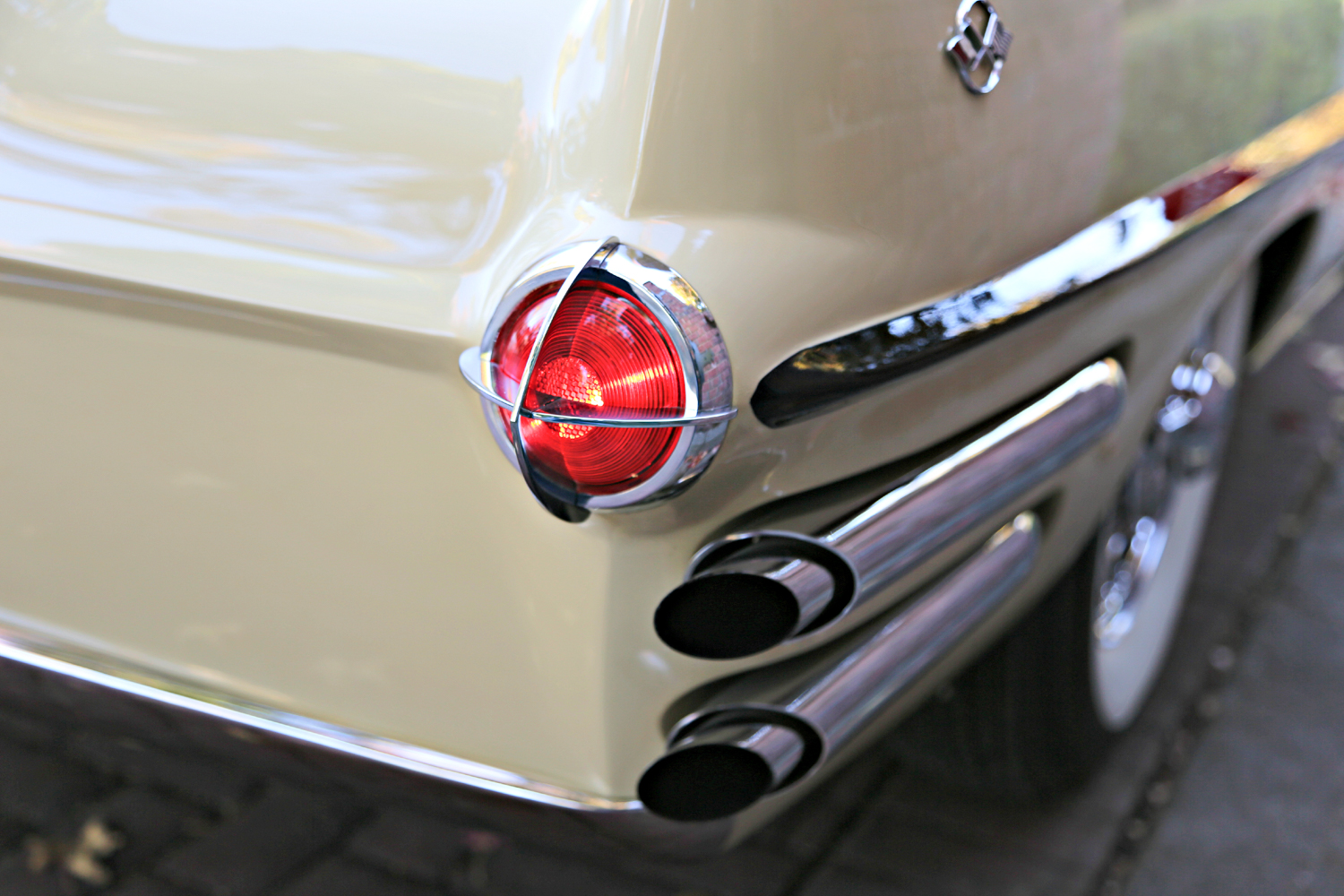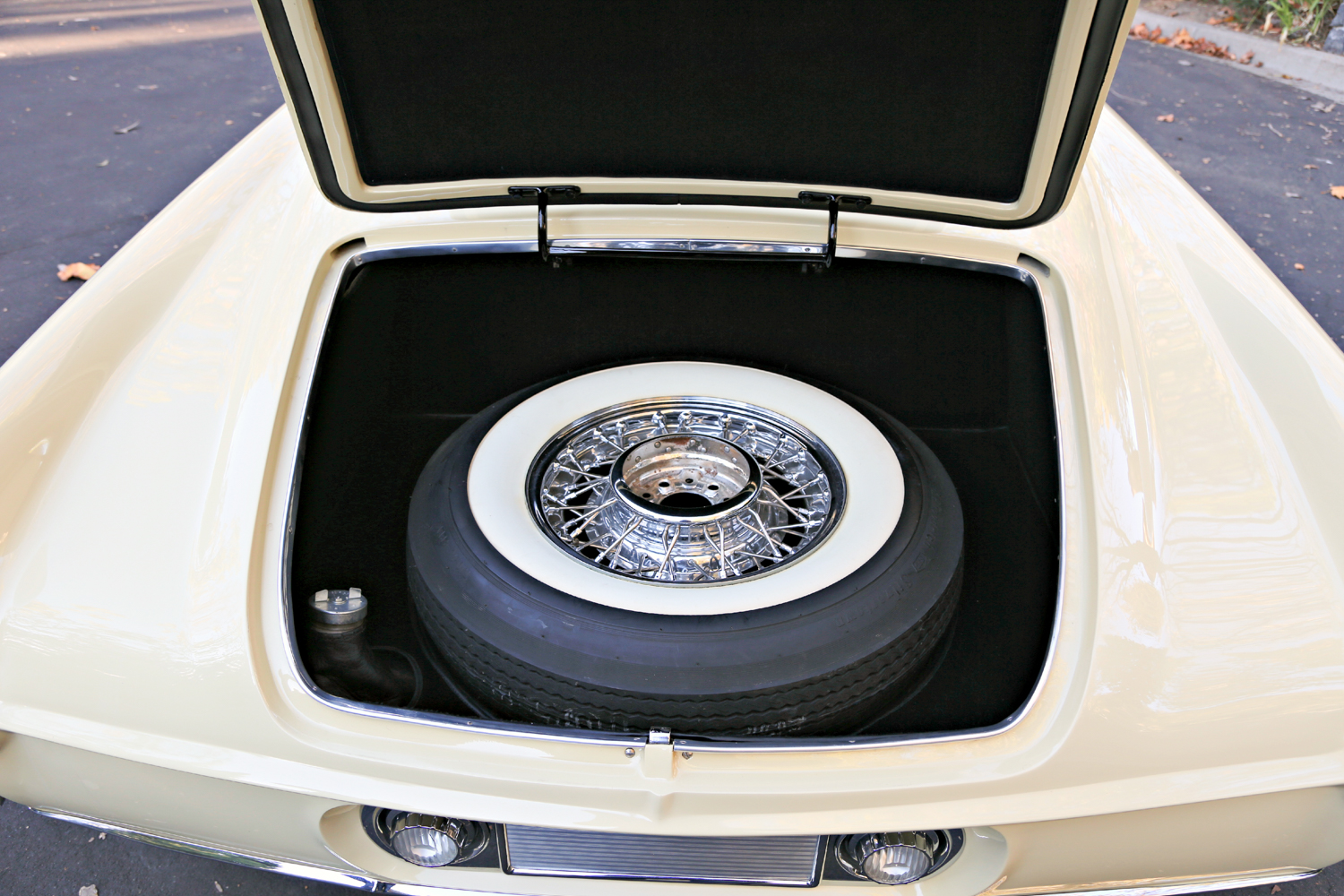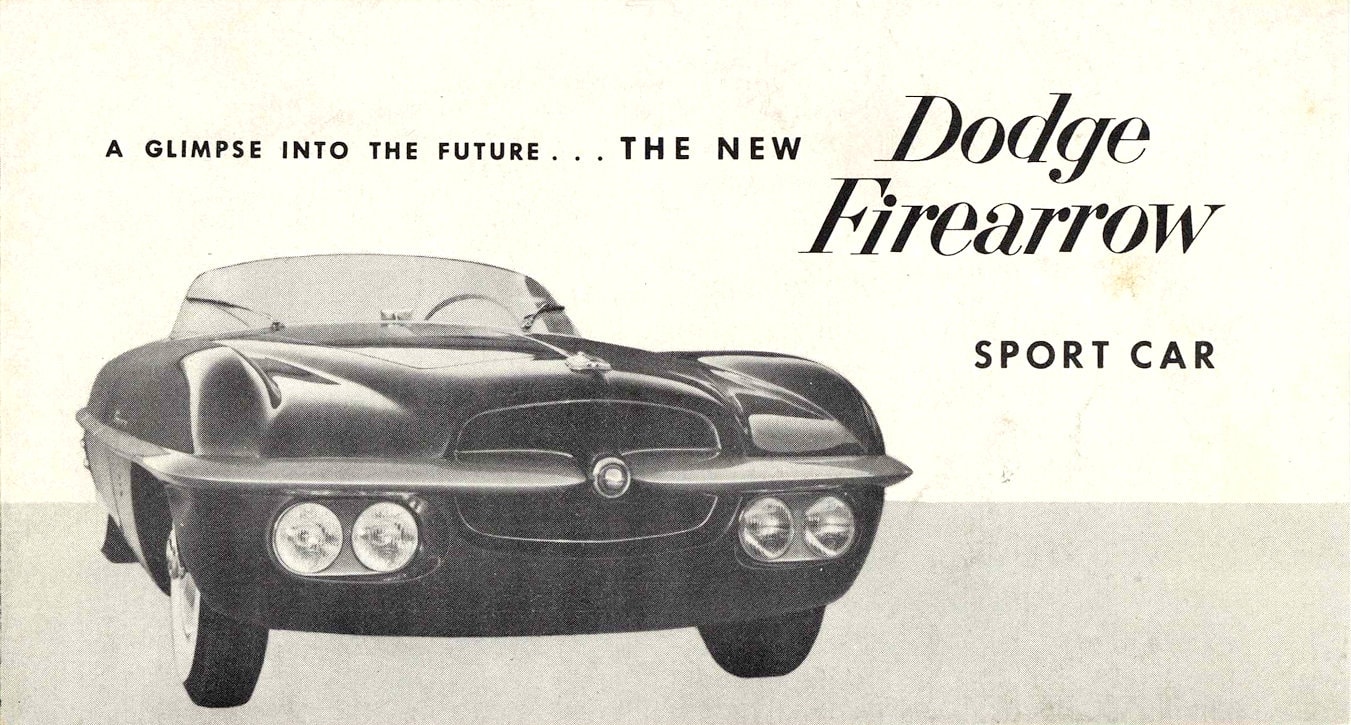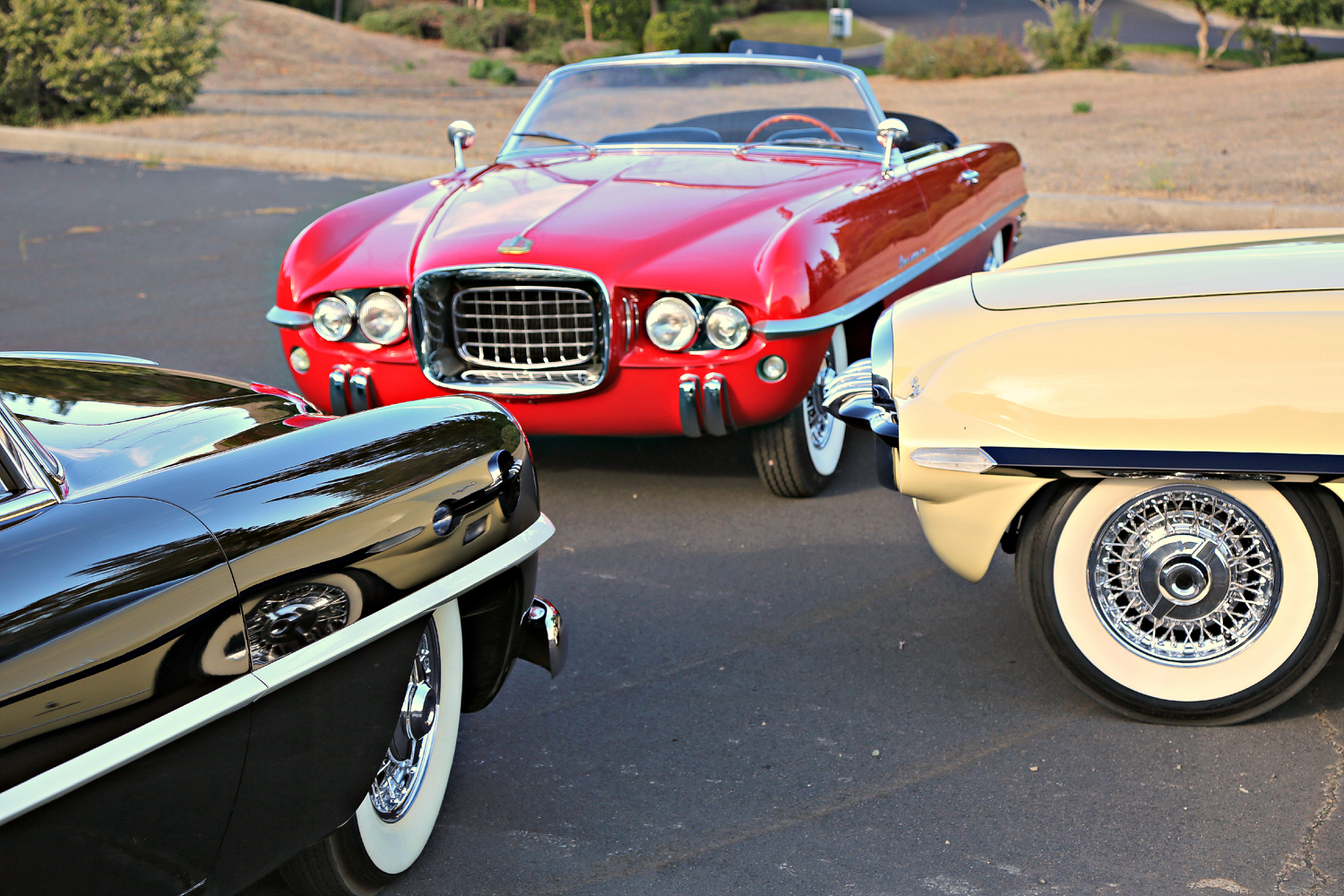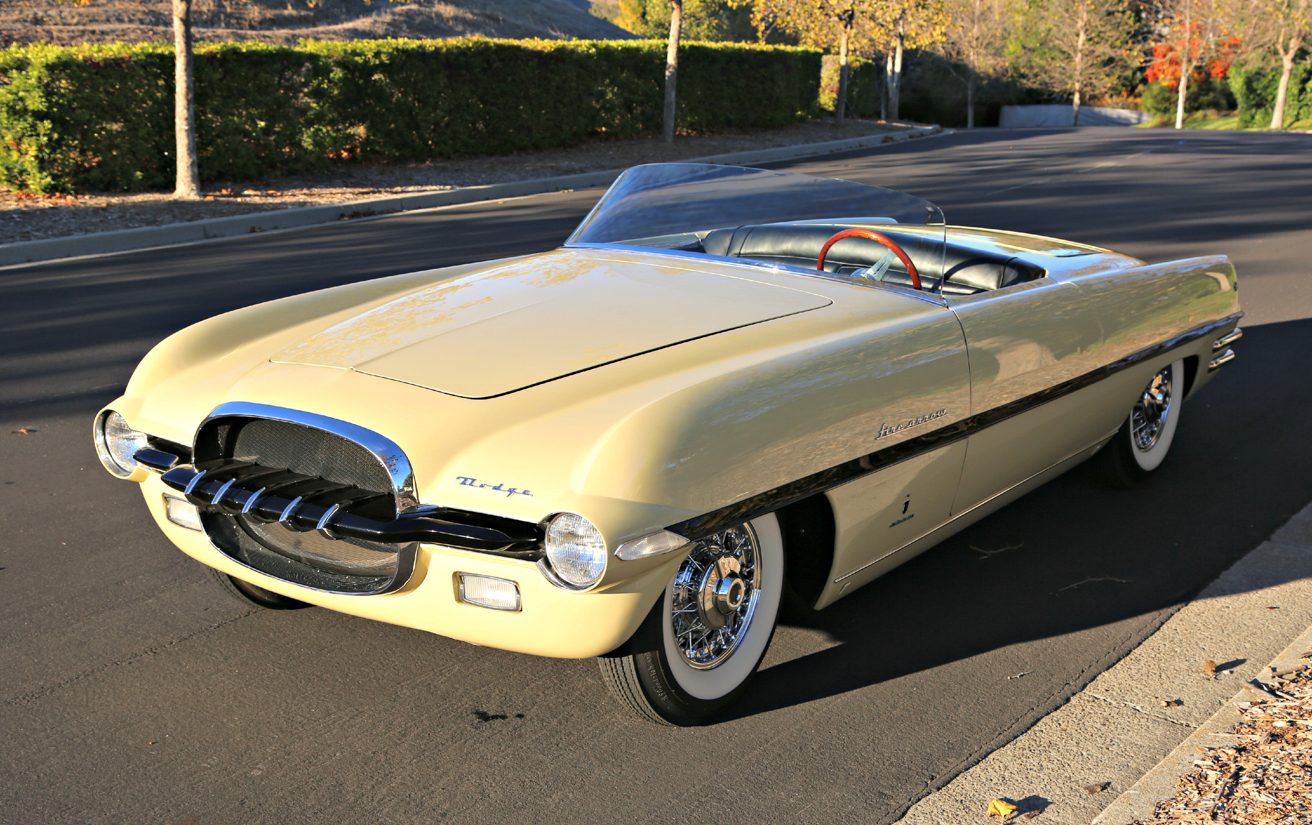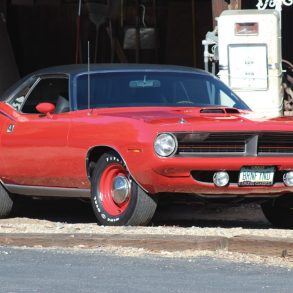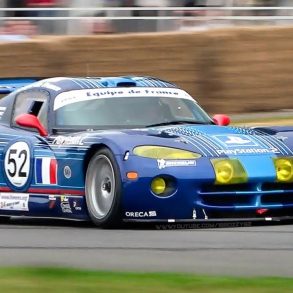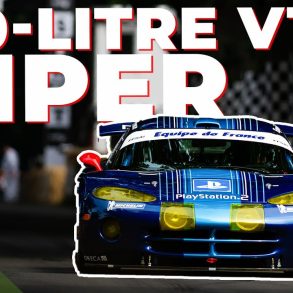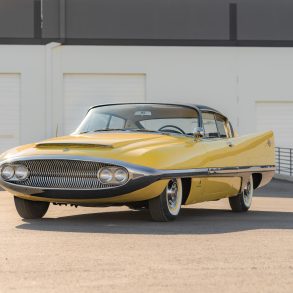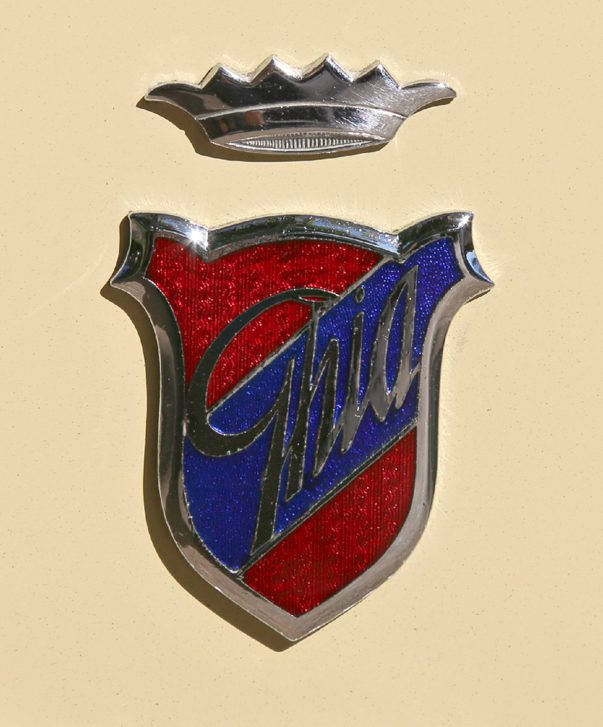
Another factor influencing automakers in the early post-war period was European design. Thousands of American servicemen, serving in Europe during and after the war, had seen some of the elegant and stylish designs that had originated in England, Germany, France and especially Italy. Wanting to bring some of that glamour to America, American manufacturers and designers began working with some of the Italian coachbuilders, all of which were were eager for business after the devastating effects of the war on the European economy.
In 1950, the Italian coachbuilder Ghia, under direction of Ghia manager Felice Mario Boano, had designer Gigi Serge create a one-off Plymouth show car for Chrysler President K.T. Keller. The car was a four-door, semi-fastback design named the XX-500. Keller liked what he saw, and began commissioning the Italian coachmaker to build a series of dramatically-styled concept cars starting with the Chrysler brand, then later Plymouth and Dodge.
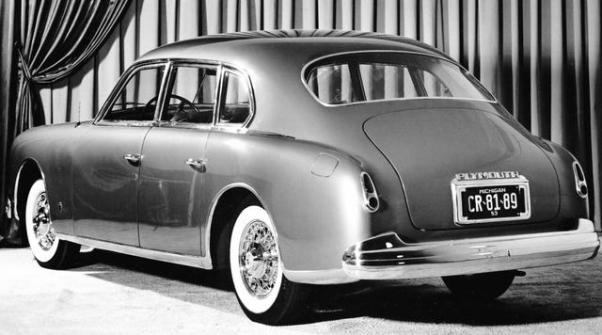
The timing of the Italian-American collaboration could not have been better. Shortly after the XX-500 was presented, K.T Keller would hire stylist Virgil Exner, whose innovative and exciting designs would change the automotive styling landscape in the ’50s. Exner would take full advantage of the talented artists and craftsman at Ghia to bring his ideas to fruition. Another fortunate factor was Chrysler’s introduction of the 331 cubic-inch “FirePower” Hemi V-8, in 1951, used in the Chrysler line. A year later, Desoto would get a 276 cubic-inch hemi. The Dodge line-up would receive their own version of the hemi engine for the 1953 models, the 241 cubic-inch “Red Ram”.
Armed with a modern power V-8 and a talented new stylist with Italian coachbuilders ready to work, the stage was set for Dodge to at long last have something exciting to show the public and start changing the way people thought about Dodge.
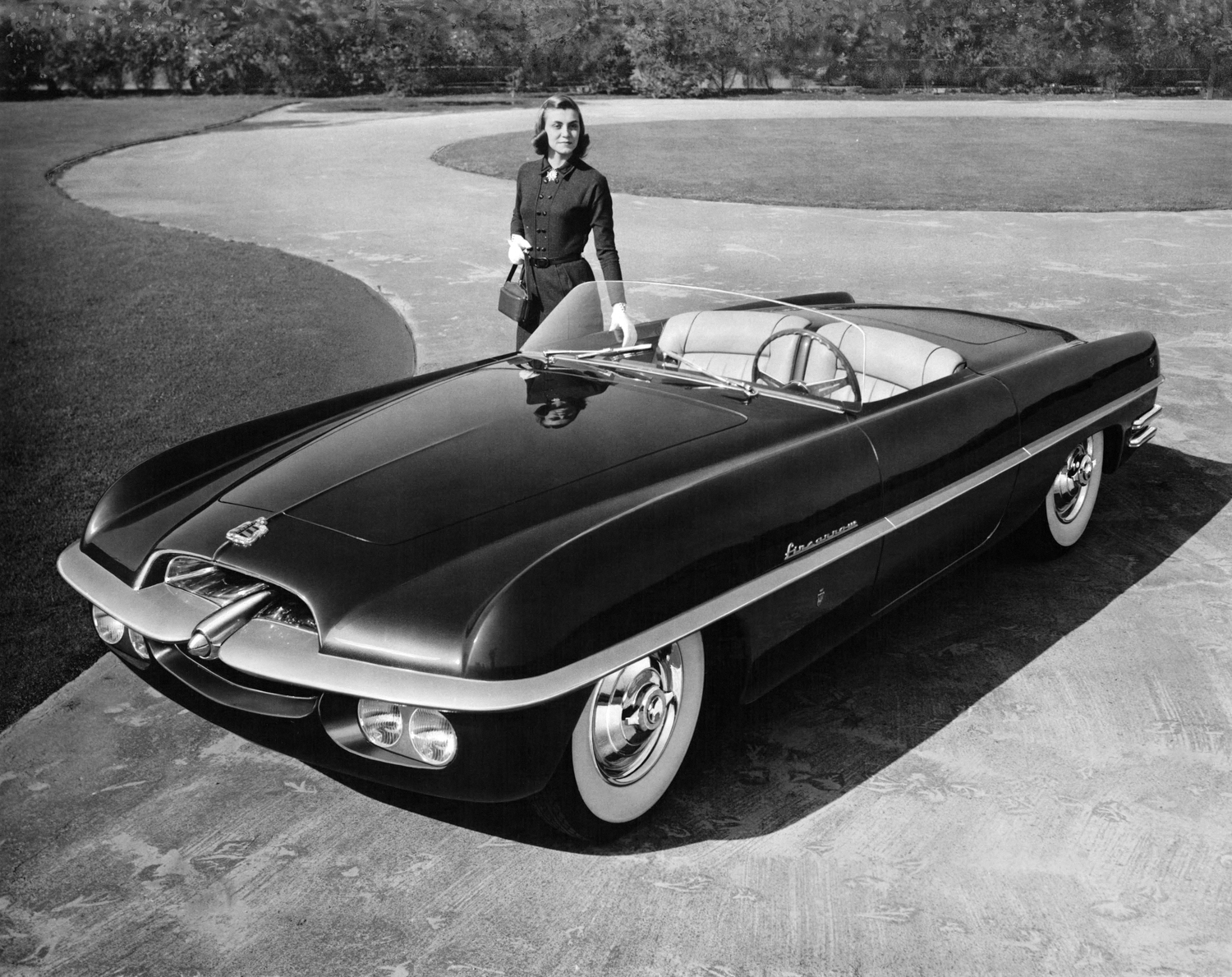
In 1953, Dodge debuted its first of a series of concept cars at the Turin Auto Show. The Ghia-crafted roadster was named Firearrow, and had a low and wide stance, in fact, it was more than twice as wide as its body height at the cowl. The sleek red metallic colored body was accented with a bold metallic gray trim piece that separated the front of the car, bisecting the grill opening, then wrapping around the front fenders and continuing the full length of the body. The quad headlights were located below the trim and there were twin, stacked, chromed tailpipes that protruded three-quarters of the way down the quarter panels, exiting at the rear. The Firearrow also featured a low-cut, one-piece, curved windshield with no frame. Smooth, chrome wheel-covers completed the exterior. The interior was trimmed in yellow-buff leather with contrasting maroon piping and a floor mounted shifter. The shifter was connected to nothing since the Firearrow had no engine or transmission and was only used as a show car. The design is sometimes credited to Exner, however according to Paul Farago, head of Dual-Ghia engineering, it was based on a model submitted by the son of a Ghia woodworker. Reportedly, Exner offered some guidance on its development but never claimed credit for it. Public reaction to the Firearrow was positive, paving the way for the development of the Firearrow ll.
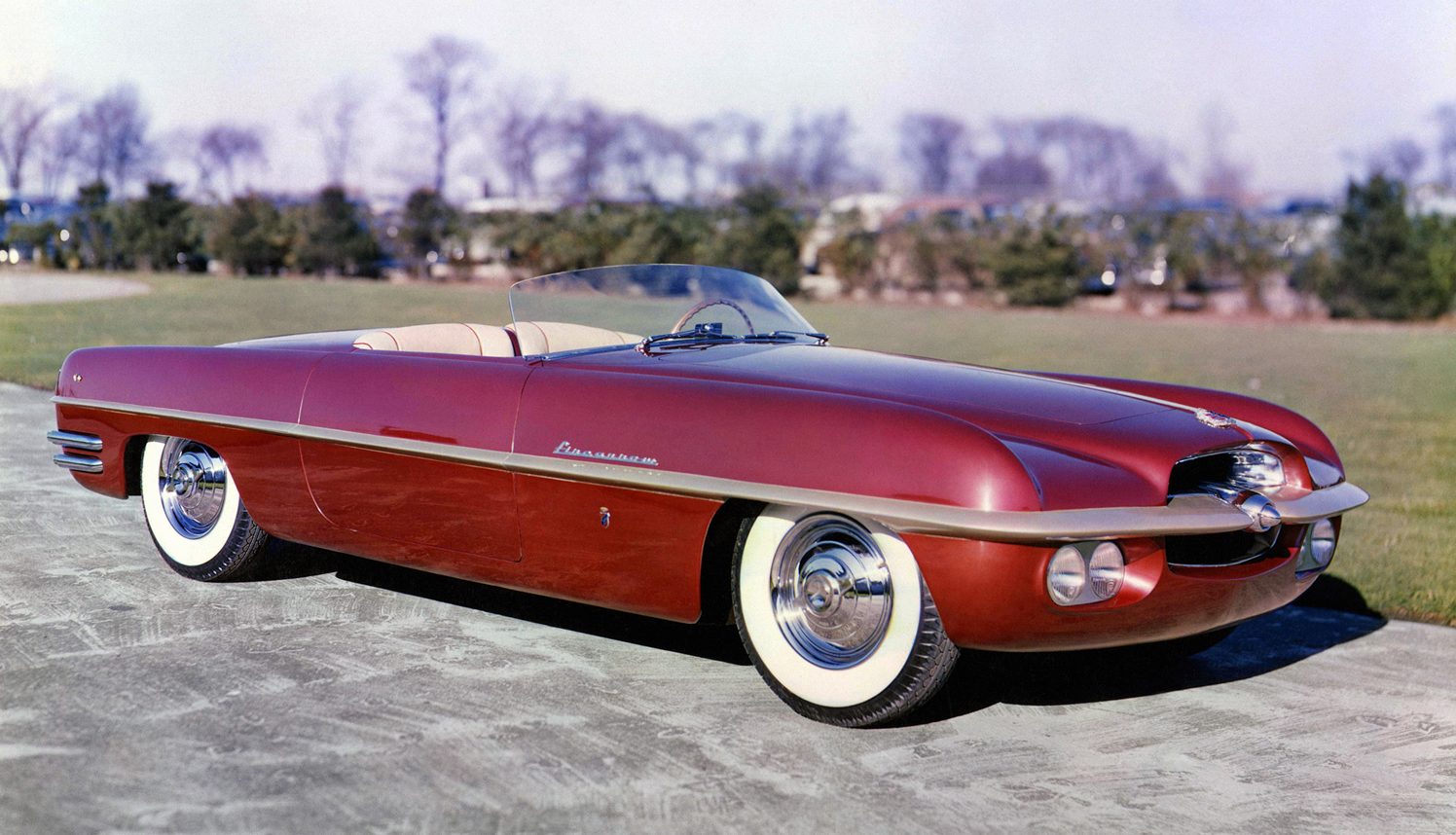
Chrysler and Ghia wanted to explore the prospect of producing a production sports car such as the newly introduced 1953 Corvette, so it was decided that the Firearrow ll should be a running and driving car. To that end, Dodge’s new “Red Ram” Hemi V-8 mated to a “Gyro-Torque” transmission was installed. The same low-slung body shape was carried over from the Firearrow I, as well as the frameless windshield and double exhaust pipes in the quarter panels.
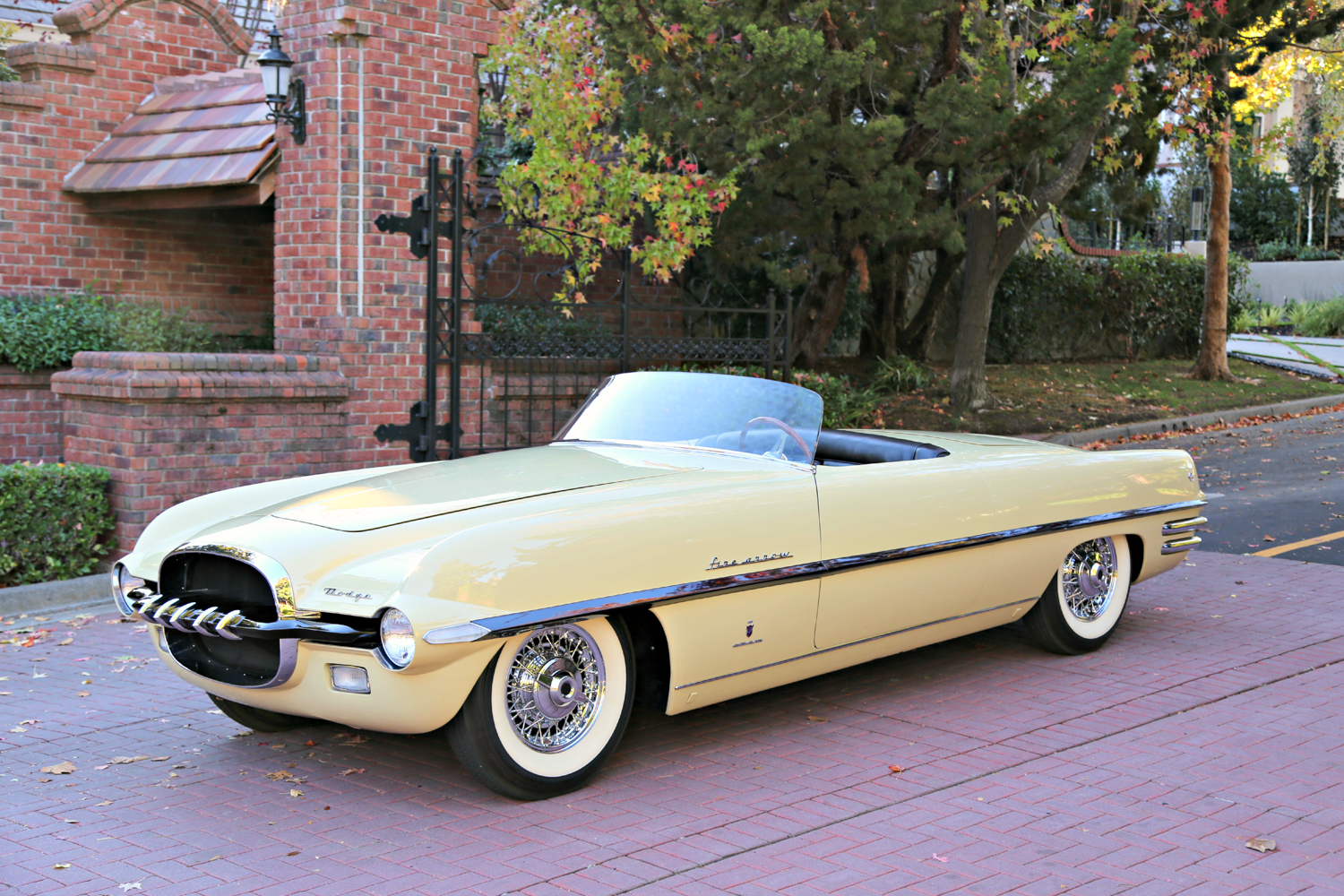
The headlights went from quad, low mounted units to single headlights mounted at the beltline in pods, at the outside edge of the car. Again, the restyled oval grill was horizontally separated by a black painted molding, but this time accented by five vertical chrome teeth that resembled the 1953 Plymouth production car. There was a pair of rear deck hatches that were activated by pulling spring-loaded levers from the interior: one to be used for the storage of luggage, the other contained the spare tire and fuel filler.
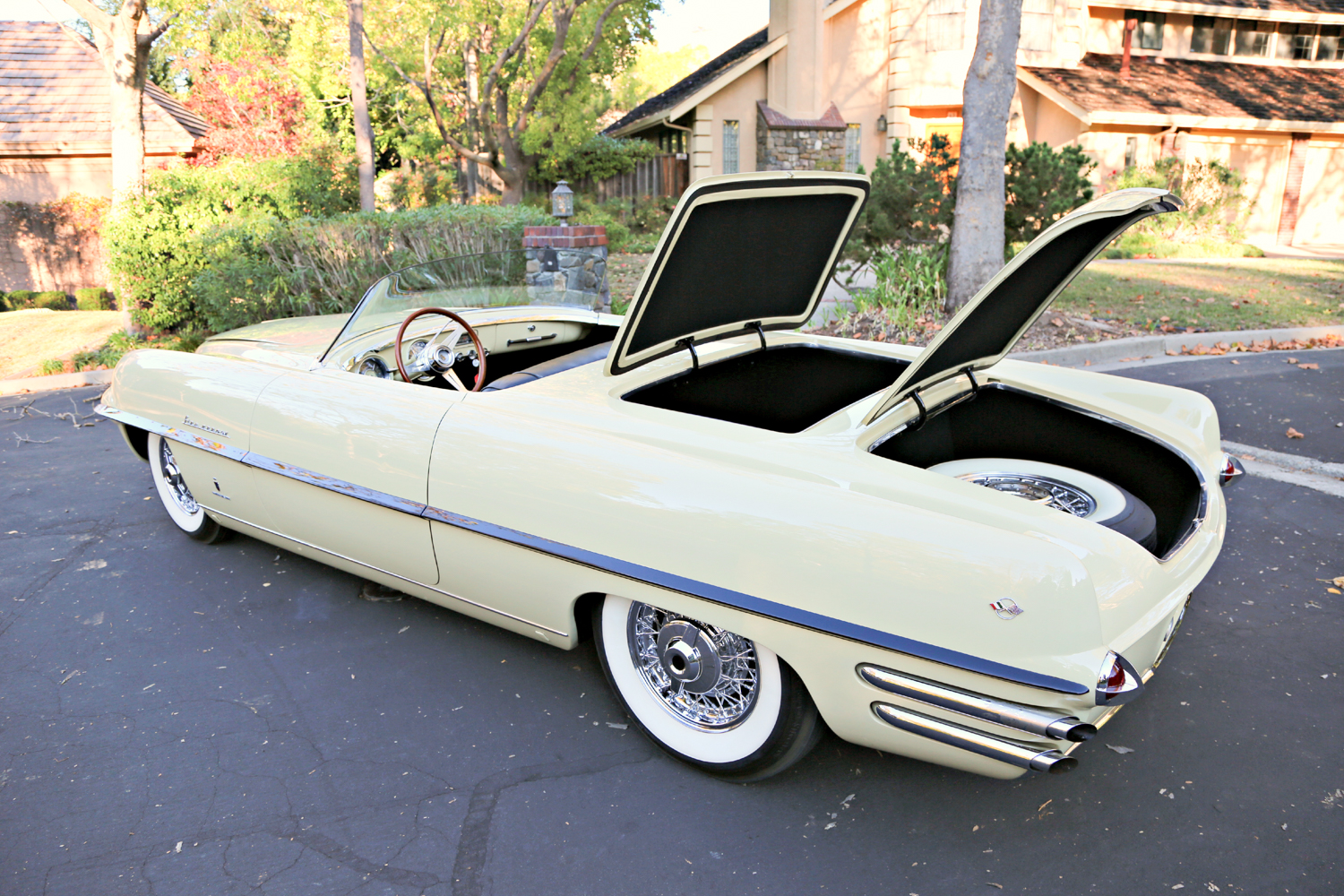
Similar to the first Firearrow, a painted side molding ran the length of the car. The body was finished elegantly in a pale yellow with the side molding painted black, all riding on a set of chrome wire-wheels and wide whitewall tires. No door handles, door glass or rear-view mirrors were used. The interior was trimmed in black leather with deep curves in the door panels that followed the shape of the exterior panels, allowing for large armrests and adding to the aircraft cockpit effect.
The dash housed full instrumentation, including a tachometer and the transmission gear selector was column-mounted. A three-spoked, aluminum Nardi steering wheel with a wooden rim set off the entire cockpit. The fact that the Firearrow ll was a running and driving car took it one step closer to becoming a production car, however, lack of a convertible top, windshield frame, door glass and door handles kept it solidly in the concept car category for now. The next Firearrow would have to be dramatically styled, but also be a fully useable street car.
The Firearrow lll was the first and only coupe in the Firearrow series. Styling was revamped and the front end was distinctively Ghia with a large oval grill opening, fitted with chrome concave vertical slats. A set of quad lights returned, this time in the form of two inboard mounted regular headlights and two smaller outboard mounted driving lamps. Dual bumperettes were mounted left and right down low. The same type of painted side trim used on the earlier Firearrows was retained, as were the unique tailpipes sprouting from the quarter panels. The roof design featured a large green house with a big wrap-around backlight, reported to be the largest piece of glass ever used in any automobile at the time. The car was painted metallic blue, including the side molding.
The interior was spacious, especially for a car that stood less than five feet high, with creature comforts that included a sumptuous two-tone Opal Blue and white leather seats, heavy-pile carpeting, fully functional heater and radio, plus an ashtray.

As with the Firearrow ll, the Firearrow III coupe was constructed on a regular production chassis from the Dodge Royal. The stock production car drivetrain was unitized, including the “Red-Ram” Hemi V8 engine providing ample power. Suspension was also taken straight from production models, as was the recently introduced fully automatic Torque-Flite transmission. Chrysler conducted a series of tests on how to optimize weight distribution, resulting in handling that was far superior to the production cars from which the chassis had been sourced.

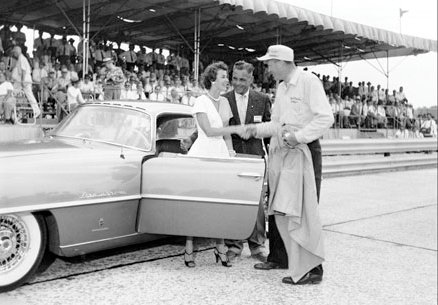
After it was completed by Ghia, the racy-looking coupe was selected to be the centerpiece at the opening of Chrysler’s new Chelsea Proving grounds in June 1954. That year, Betty Skelton was the talk of the town as she piloted a variety of Chrysler products to several records, before being invited to take part in this special event. By the early 1950s, Miss Skelton had reached celebrity status in the world of aviation. While her forte was flying, having flown solo at age 12, she was considered one of the best aerobatic pilots in the world by age 20. As part of the promotion for the new proving grounds, Chrysler invited the young aviatrix to wring-out the Firearrow III out on the new, banked oval and put it through the paces. Stylishly outfitted in a dress and high heels, Miss Skelton set a new world record for a woman on a closed course of 143.44 miles per hour! Following Betty Skelton’s speed runs, the Firearrow III was placed on the show circuit.
The fourth and last Firearrow was a convertible completed in 1954 and was basically a soft-top version of the coupe. The Firearrow IV had a revised grill that featured an egg-crate design more commonly associated with the Chrysler Ghia cars.
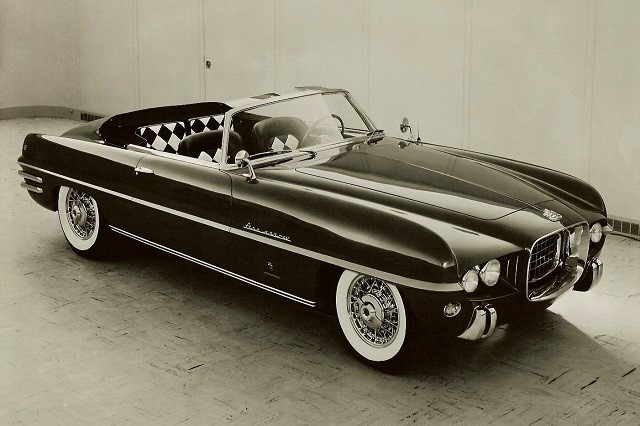
Additionally, the air intakes on the front fenders of the Firearrow coupe were deleted. The color scheme on the Firearrow IV was bright red, with the side molding painted silver. The most striking feature has to be the interior, which was upholstered in a black and white diamond pattern. There was a back seat, and it was billed as a four-passenger car, but only a four year-old could actually sit back there.

The rear seat cushions are removable, revealing a luggage rack trimmed in wood. The top is designed to be watertight and roll-up windows are provided. Again, the Firearrow IV had a Nardi steering wheel, but with a 16-jewel, swiss-made, “Dodgematic” clock in the center. The Firearrow lll coupe and the Firearrow IV were both very useable and drivable cars that could have been put into production, but the corporate chiefs at Chrysler decided not to move forward with a production car.
Where are they now?
The Firearrow I never had a drivetrain and it has been lost to history, happily all three of the other Firearrows exist and have been restored and are in excellent condition. Unlike General Motors, Chrysler chose to sell many of their show cars and not order them destroyed.

After completing the auto show circuit, the Firearrow ll was sold to someone in Hawaii, possibly to one of the Hearst family members. It remained on the island for about 20 years before a California collector acquired it. By the mid-’80s it was a disassembled basket case in need of restoration. Concept car collector and restorer Joe Bortz bought the car and performed a total ground-up restoration, returning it to its former glory. The Firearrow ll was purchased by Don Williams of the Blackhawk Collection and it has been on display at the Blackhawk Museum in Danville, California for many years. It was exhibited on the lawn at Pebble Beach in 2000.
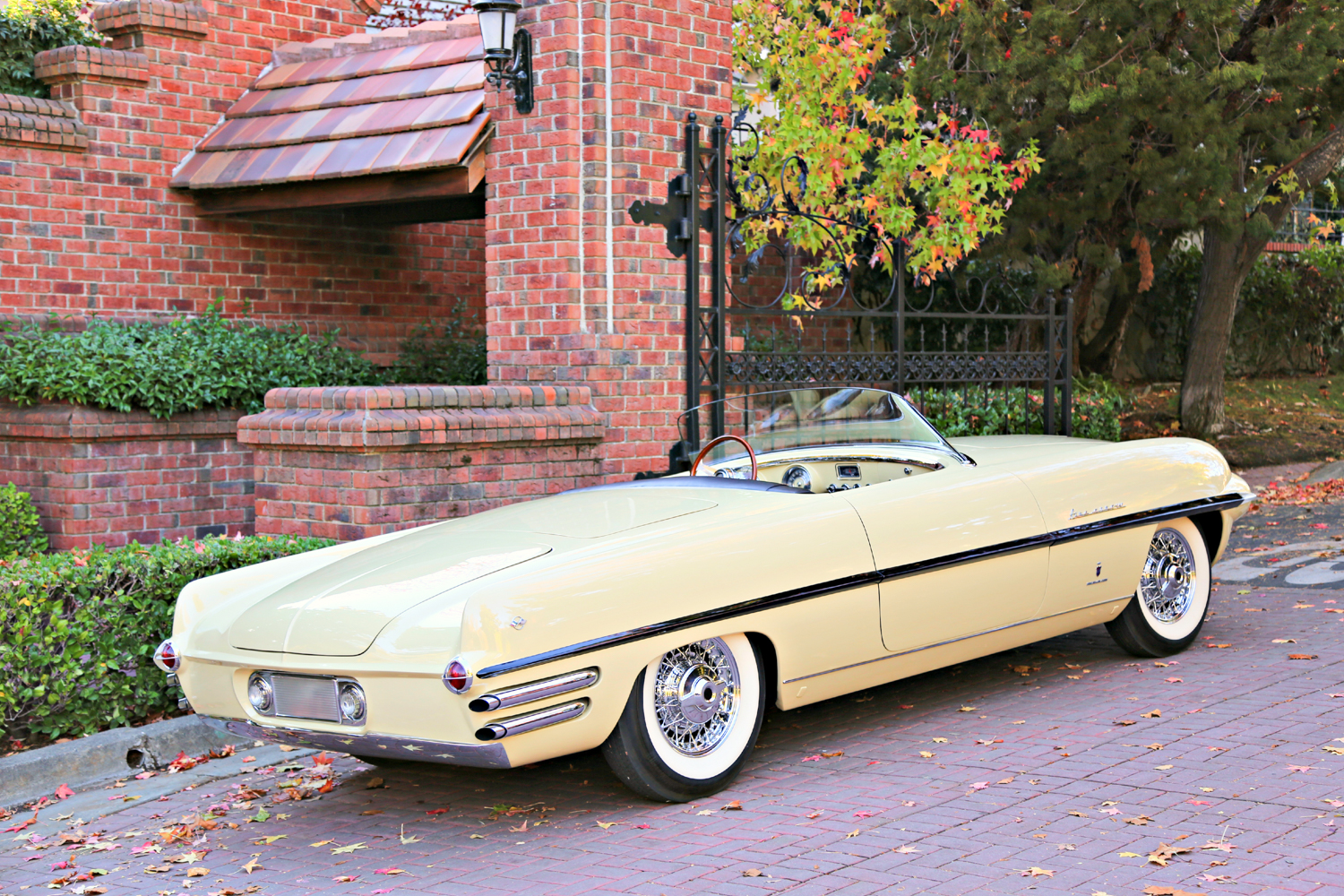
In early 1955, the Firearrow III coupe was crated up and sent back to Ghia, in Turin, Italy. From there, Firearrow III was sold to someone in France who kept the car for the next 30-plus years. During the next three decades, Firearrow III was at first used on a regular basis, and later driven or exhibited sparingly. Later, it disappeared and was thought to have been lost. In the 1980s, an inquiry to an automotive magazine caught the attention of then GM Chief of Design, the late Dave Holls. A letter to the editor from the owner of the car, now back in Italy, was trying to locate some information about his Ghia-bodied coupe. Holls alerted Joe Bortz to the car’s whereabouts and efforts were made by Bortz to purchase the car and add it to his collection of one-off concept cars. After several months of negotiating, the Firearrow III was purchased and returned to the U.S.A. Later, the Firearrow III was the subject of a ground up restoration by Fran Roxas, who carefully returned it to its original appearance.
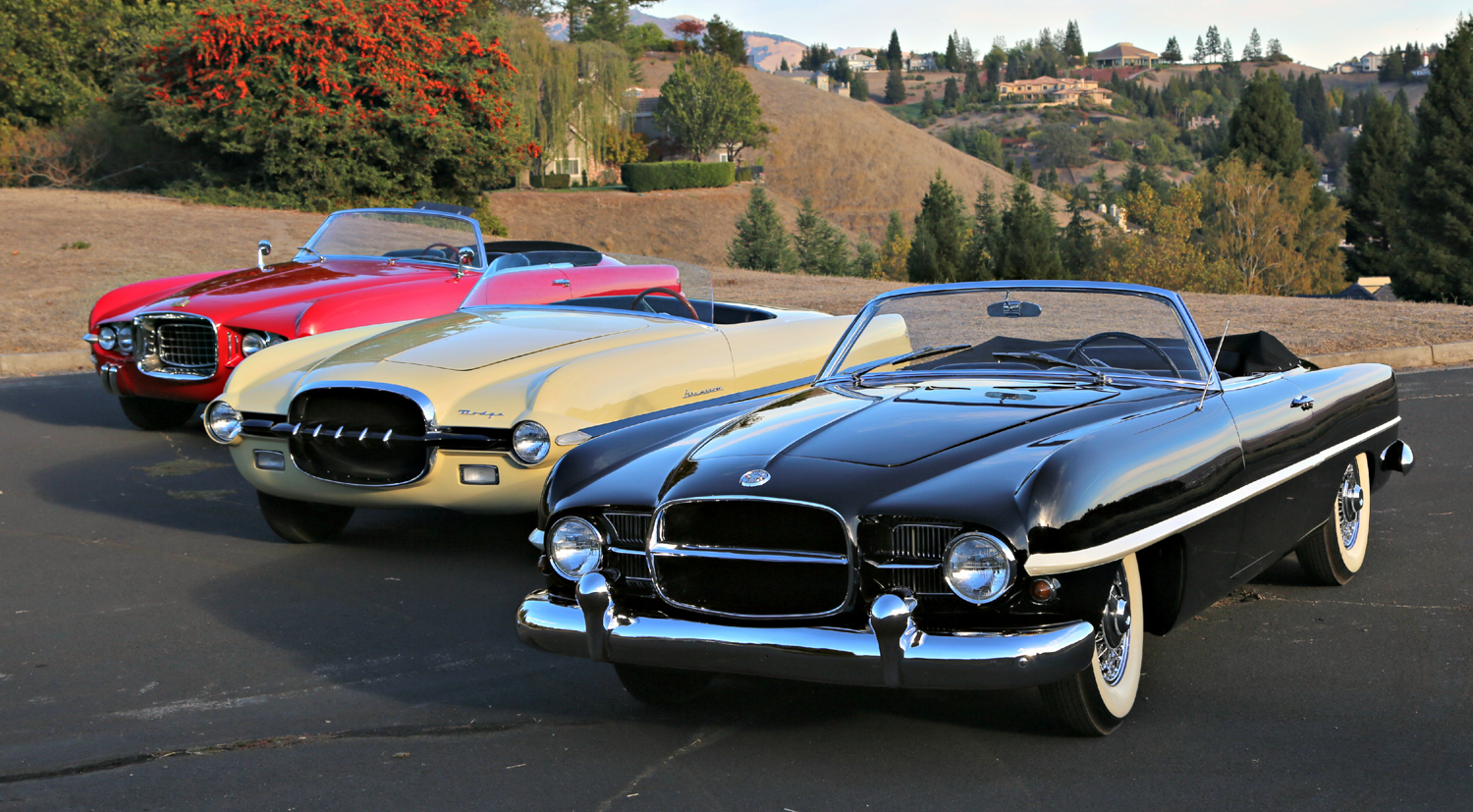
The Firearrow IV was restored and previously owned by noted collectors Noel Thompson, Sam and Emily Mann among others, but the Blackhawk Collection has been the car’s custodian for many years, and it has been on display next to the Firearrow II at the Blackhawk museum for some time.
The Firearrow legacy
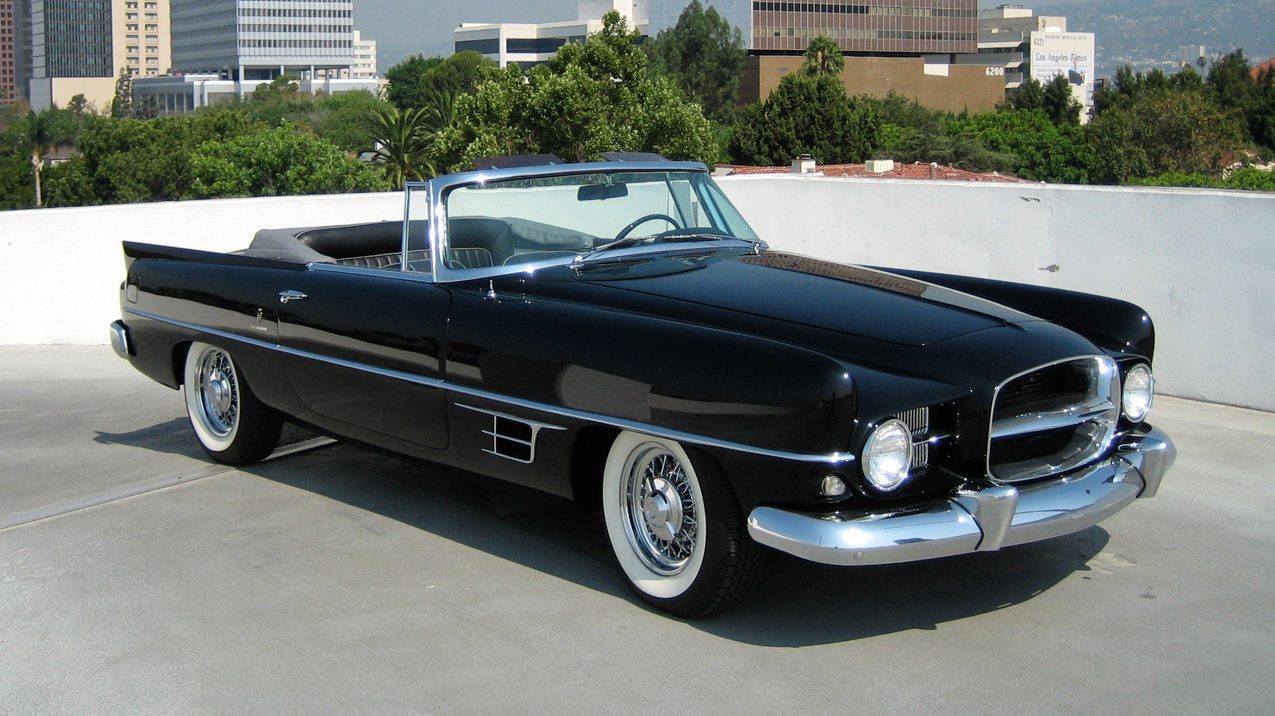
Although the Firearrows never made it into production, one man would not let it die. Gene Casaroll owned a Detroit-based transport company called Automotive Shippers that shipped new cars. Casaroll also owned a company that produced twin-engine trucks for the U.S. Military during World War ll named Dual-Motors. A passionate car enthusiast, Casaroll purchased the rights to the Firearrow design from Chrysler after talking with Carrozzeria Ghia owner Luigi Segre. Casaroll had Ghia develop a car based on the 1955 Dodge utilizing the drivetrain, but with a unit-body type of construction to gain interior space but retain the low stance of the Firearrows. The prototype was named the “Firebomb”. In 1956, the first of about 177 Dual-Ghia luxury convertibles went into production, ending in 1958.
Driving the Firearrows
This lucky journalist was graciously granted permission by Don Williams of the Blackhawk Collection to drive and photograph the Firearrow ll, Firearrow IV, and the Firebomb. All three cars are in excellent condition and run well. The Firearrow II was very smooth and easy to drive. With no windshield frame, visibility was excellent. The styling is so interesting, plus the great history of the car captivated me. I had a smile on my face like the Joker that would not go away for hours. The small Hemi engine just purred and it was remarkably tight and rattle-free. I don’t know if this was the result of Ghia’s craftsmanship, or the high quality of the restoration, but it was extremely impressive for a hand-made, one-off, 65-year-old concept car.
I drove the Firearrow IV convertible next. This car drives and feels like a production car: comfortable, full of amenities and plenty of power. The black and white diamond pattern interior was dazzling, and it was a pleasure to drive. Just like Gene Casaroll, I couldn’t stop thinking what a fabulous production car this could have been.
The Firebomb was the most spacious and comfortable, as it was designed to be a street car. Again, it was easy to drive and lovey to look at. My eyes kept darting around the dash and interior, feasting on all the small details of the styling. Dressed in black, it is a very sporty and elegant automobile. All three of these cars were a privilege to drive and photograph.
These concept cars are as exciting to look at today as they were when first shown in the early ’50s. Their artistry has stood the test of time, and gratefully they have survived for us to enjoy.


